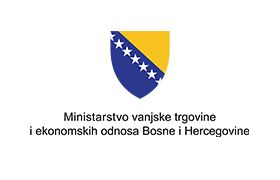
Shift towards attractive and sustainable urban transport in cities
Access to sustainable and attractive public transport is one of the key components for liveable cities and towns. It can make cities better places to live and work, driving trade, economic growth, and jobs. Sustainability is not only about reducing pollution, but it is also a tool that can promote social equity and safety through accessible and safe transportation options.
Read more
Towards a circular future in Bosnia and Herzegovina
The BiH SuTra project aims to reduce climate impact and support a transition towards a low-carbon, resource-efficient and environmentally sustainable future – one that aligns seamlessly with broader development goals. At the heart of this effort lies the circular transition.
Read more
Starting small, thinking big: how Swedish preschools teach sustainability
In Sweden, sustainability is not just a topic - it’s a way of life introduced from the earliest stages of education. Swedish preschools embed sustainability into daily routines and play, helping children understand their role in protecting the planet and caring for others. Rather than isolating the concept in special lessons, it becomes part of how children learn, interact, and make choices. This model offers valuable insight for preschools around the world, showing that even the youngest learners can begin to grasp and practice sustainable thinking.
Read more
From Swedish farms to Bosnian valleys - how to boost sustainable farming
How can municipal authorities in Bosnia and Herzegovina navigate climate pressures, EU policies and on-the-ground innovations to foster resilient farming? This blog post is written by BiH agriculture experts, Prof. Dr. Sabrija Čadro and Samir Husić, MA, engaged in the BiH SuTra project.
Read more
Bosnian municipalities learning from Swedish sustainability efforts
What happens when a group of local leaders from Bosnia and Herzegovina embarks on a learning journey to one of the world’s greenest countries? A deep shift in perspective – and a renewed sense of purpose.
Read more
Equipping local actors is key for a greener future
BiH SuTra’s partners, the municipalities and the city, are working toward long-term sustainability goals and turning ambitious environmental and development plans into reality requires more than vision - it demands practical skills, technical expertise, and institutional capacity. To support this transition, the BiH SuTra project is helping these communities to identify their most pressing capacity-building needs. Together, we address them through study visits, targeted training, and collaboration with Swedish partners. These efforts aim to equip them with the tools and knowledge needed to implement their transition plans and take meaningful steps toward a sustainable future.
Read more Banovici
Banovici
 Breza
Breza
 Gacko
Gacko
 Gradiška
Gradiška
 Kakanj
Kakanj
 Ugljevik
Ugljevik
 Živinice
Živinice
 Ministarstvo vanjske trgovine i ekonomskih odnosa BiH
Ministarstvo vanjske trgovine i ekonomskih odnosa BiH
 Stockholm Environment Institute
Stockholm Environment Institute
 Sweden
Sweden